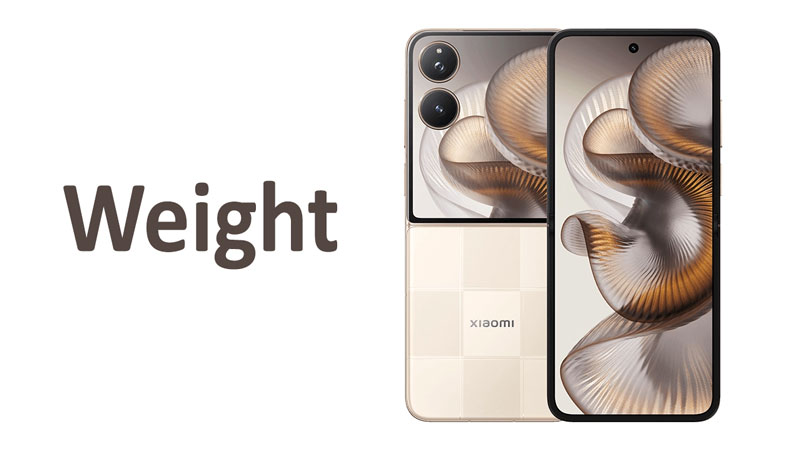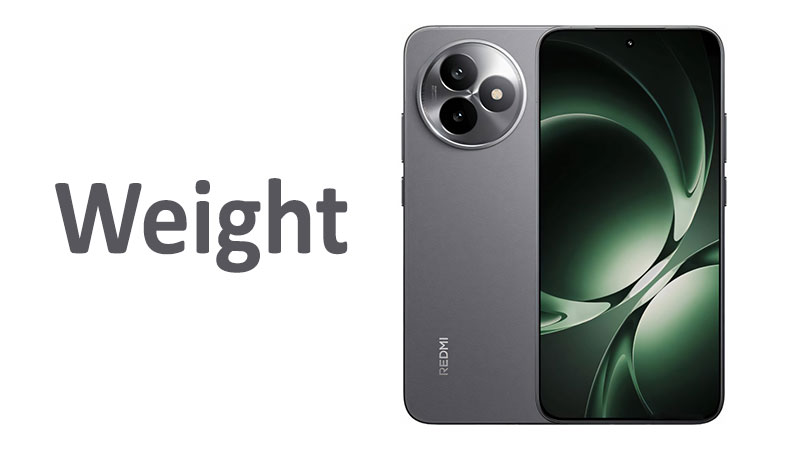The OPPO Reno 15 weight specification is one of the most crucial, yet often overlooked, elements of its overall design. Consumers frequently focus on the camera megapixels or the processor speed. However, the physical mass of the device directly dictates the daily user experience and long-term comfort. This detailed analysis examines the 187-gram mass of the OPPO Reno 15. We explore what this number means in practical terms. We compare it to previous models and key competitors in the modern smartphone market. Understanding the weight helps potential buyers determine the phone’s portability and hand feel. This single metric reveals significant insights into OPPO’s engineering choices regarding battery size and structural materials. We cover the measurements in both grams and ounces to provide a complete global perspective.
The Exact Measurement: Grams and Ounces
The official weight of the OPPO Reno 15 is listed at 187 grams. This figure represents the device’s mass, including all internal components, the massive battery, and the integrated frame. This is a precise number that situates the device firmly in the mid-weight category of modern smartphones. To cater to a global audience, especially those familiar with the imperial system, 187 grams translates precisely to 6.60 ounces. These precise measurements are vital for users who prioritize lightness for single-handed use or pocket comfort.
The difference between a 6-ounce phone and a 7-ounce phone is substantial in the hand. The 6.60 ounce figure suggests OPPO achieved a comfortable balance. They successfully integrated high-end features without leading to excessive bulk. The 187 grams is a key selling point for those seeking premium specifications in a manageable package.
Why Smartphone Weight Matters to Consumers
Weight is synonymous with perceived quality and daily usability. A phone that is too light can feel fragile or cheap. A phone that is too heavy can cause fatigue during long usage sessions. The perfect weight strikes an emotional balance for the user. It suggests durability and substance without becoming burdensome.
Users often hold their phones for hours every day, whether for streaming, reading, or gaming. A few extra grams translate into noticeably more strain on the wrist over time. Furthermore, weight directly impacts the phone’s pocketability. A lighter phone slips more easily into clothing pockets without dragging or creating an uncomfortable bulge. The 187-gram target for the OPPO Reno 15 reflects an awareness of these critical ergonomic considerations.
The phone’s density is also related to its weight and size. The Reno 15 manages to house a large 6200mAh battery while maintaining this moderate weight. This shows efficient internal design and strategic material selection. The weight figure is a silent testament to the engineering effort involved in the device’s development.
The Engineering Behind the 187 Grams
Achieving a specific target weight like 187 grams is a complex feat of smartphone engineering. Manufacturers cannot simply make the phone lighter; they must manage numerous trade-offs. Every component, from the screen panel to the cooling system, contributes to the final mass. OPPO’s design team made calculated decisions to optimize performance and usability simultaneously.
Balancing the Components: Battery vs. Materials
The single largest factor driving smartphone weight is the battery cell. The OPPO Reno 15 features a massive 6200mAh battery. Batteries of this capacity typically push devices into the 200-gram range or higher. The fact that the Reno 15 achieves 187 grams despite this large battery is impressive. This suggests a careful compromise was made in other areas.
The weight savings likely come from the choice of chassis materials. OPPO probably used a combination of lightweight aluminum alloy for the frame and high-quality composite polymers for the back panel. These materials offer high strength without the density of traditional glass or stainless steel used in ultra-premium flagship devices. The battery’s high energy density also plays a role. A more efficient cell requires less physical material for the same capacity, contributing to the lighter final product.
Design Philosophy: The Slim Factor
Weight and thickness are intrinsically linked. The Reno 15 maintains a slim profile, which naturally helps reduce the overall mass. A thinner phone uses less material in its body shell. OPPO has consistently prioritized sleek aesthetics in the Reno series. This commitment to slimness directly influences the weight management strategy.
A slim phone enhances comfort, making it feel less blocky in the hand. The reduced thickness, combined with the 187-gram weight, creates a synergy of favorable ergonomics. This dual focus on thinness and moderate weight caters to users who value style and ease of handling over absolute ruggedness or industrial-grade materials. The subtle curves of the body also help distribute the weight evenly across the palm.
Material Composition and Weight Distribution
The materials used in the Reno 15 are crucial to its final 187-gram weight. Many competing phones utilize heavy glass backs and robust stainless steel frames. The Reno 15 likely uses aerospace-grade aluminum for its frame structure. This material is strong but significantly lighter than steel.
The use of advanced composite materials or a matte glass finish for the back panel also saves precious grams. The internal layout of components, including the main circuit board and the camera module, also impacts perceived weight. OPPO engineers distribute the weight centrally. This prevents the phone from feeling top-heavy or bottom-heavy. A well-balanced phone, even at 187 grams, feels lighter than a poorly balanced 180-gram device. This attention to detail defines a premium user experience.
Detailed Comparison of Reno 15 Weight
Comparing the 187-gram weight of the OPPO Reno 15 against its predecessors and market rivals provides essential context. This figure does not exist in isolation. Its significance lies in what other devices offer at similar weight points and with comparable features. The Reno 15 positions itself skillfully in the current landscape.
Specialized Comparison: Reno 15 vs. Previous Reno Models
Looking at the history of the Reno series shows a trend toward optimal weight management. Older Reno models often hovered slightly lighter, or occasionally heavier, depending on the battery size. For example, some earlier models came in closer to 180-181 grams. These phones generally featured smaller batteries, typically around 4500mAh to 5000mAh.
The Reno 15’s 187 grams with its large 6200mAh battery represents a generational leap in power-to-weight ratio. The engineering goal here was clear: significantly boost battery life without penalizing the user with a much heavier device. The slight increase in mass from some older variants is negligible. The substantial increase in battery life is a massive benefit. Users get a better all-day experience for only a marginal increase in physical weight. The Reno 15 Pro, with its even larger 6500mAh battery and bigger screen, will inevitably be heavier. This makes the standard Reno 15 a desirable option for weight-conscious power users.
Specialized Comparison: Reno 15 vs. Mid-Range Competitors
The 187-gram mass places the OPPO Reno 15 right in the sweet spot of the high-end mid-range and “flagship killer” segment. Many direct competitors fall into two categories. Some are lighter with smaller batteries, while others are heavier due to larger displays or more premium materials.
For example, the Google Pixel 9a is very similar in weight, often coming in around 186 grams. This similarity suggests that 185–190 grams is the industry standard for a balanced, high-performance handset. However, the Samsung Galaxy A-series often includes models around 180 to 181 grams. These slight differences can feel minor on paper.
In contrast, performance-focused phones like the OnePlus Nord 5 or some Xiaomi flagships can easily exceed 210 grams. Those devices often emphasize maximum battery capacity or advanced cooling systems. The Reno 15 sacrifices a few grams of weight for an optimized overall feel. This makes it a more comfortable daily driver than its bulkier rivals.
Specialized Comparison: Reno 15 vs. Flagship Devices
When comparing the Reno 15 to ultra-premium flagships, its weight advantage becomes apparent. High-end flagship phones often feature stainless steel construction, ceramic materials, and incredibly complex cooling systems. These choices push their weights well over 200 grams. For instance, the top-tier iPhone Pro Max and Samsung Galaxy Ultra models frequently weigh between 218 grams and 240 grams.
The Reno 15’s 187 grams offers a noticeable relief for users transitioning from these heavier devices. This 30 to 50-gram saving translates directly to reduced wrist strain. It provides superior comfort for extended reading or gaming sessions. The Reno 15 offers a flagship-level camera system and processing power. It delivers this performance in a distinctly lighter, more manageable package. This makes it an appealing choice for consumers who dislike the heft of the largest and heaviest smartphones.
Real-World Impact and User Experience
Weight is not just a number on a spec sheet. It shapes the tangible experience of using the phone every day. The 187 grams of the OPPO Reno 15 influences everything from the phone’s handling to its long-term durability perception.
Ergonomics and Long-Term Comfort
The 187-gram weight is an ergonomic achievement. It positions the phone perfectly for single-handed use without undue stress. A phone that is too light can feel flimsy. A phone that is too heavy can be tiring. The Reno 15 provides a solid, reassuring feel without demanding excessive grip strength.
This balanced weight is especially important for consumers who stream video or read e-books for extended periods. The wrist and fingers sustain less fatigue when holding a moderately weighted device. For mobile gamers, the balanced weight allows for better grip control and faster reaction times. The phone does not feel clumsy during intense gameplay.
Portability and Pocketability
The physical dimensions of the Reno 15 are relatively compact, which complements its 187-gram mass. The phone slips easily into most pockets, including those in tighter clothing. Heavy, bulky phones often cause garments to sag or feel cumbersome when sitting down. The Reno 15 avoids this common annoyance.
In a bag or purse, the weight difference is even more pronounced when combined with other items. The lightness contributes to a less burdened daily carry. The overall portability is a significant advantage for commuters and travelers. They value efficient design and minimal bulk in their electronics.
The Perceived Quality of Hand Feel
Consumers often equate weight with quality. Heavier phones often feel more expensive and robust. The challenge for OPPO was making the 187-gram Reno 15 feel premium, not plastic. They likely achieve this through high-quality finishes and precise engineering tolerances. The smooth transition between the frame and the back panel enhances the tactile experience.
The weight, combined with the material choices, gives the Reno 15 a satisfying density. It feels solid and well-built. It avoids the cheap hollowness sometimes associated with ultra-lightweight devices. This “hand feel” is crucial for customer satisfaction and long-term device loyalty. OPPO successfully managed to deliver a premium sensation while maintaining a practical weight.
Pros and Cons of the 187 Gram Weight Class
Evaluating the 187-gram weight requires analyzing both the inherent benefits and the potential compromises necessitated by achieving this figure. Every design decision has trade-offs.
Advantages of Being in the Mid-Weight Tier
The primary advantage is the exceptional balance of features. At 187 grams, the Reno 15 is light enough for comfort but heavy enough to feel robust. This weight allows OPPO to include a massive 6200mAh battery. This battery provides multi-day longevity for average users. This is arguably the most significant benefit of the 187-gram construction.
The weight also enhances general handling. It minimizes the risk of the phone slipping from the hand compared to ultra-light, slippery devices. The moderate weight indicates that necessary components, such as a large cooling system for the Dimensity 8450 processor, were included without severe compromise. This ensures sustained performance. It is the goldilocks zone of smartphone mass.
Potential Trade-offs and Disadvantages
The main trade-off associated with the 187-gram weight likely involves premium materials and extreme durability. Achieving this weight with a 6200mAh battery means OPPO probably avoided components like a heavy stainless steel frame or a thick, ceramic backplate. Flagships weighing over 210 grams gain extra robustness from these denser materials.
The Reno 15 may use a less dense aluminum alloy or composite glass materials. While still durable, these might not offer the same ultra-high scratch and impact resistance of the heaviest flagships. Furthermore, the 187-gram weight might be slightly heavier than some users desire. Those who prioritize absolute minimalism might seek phones closer to the 160-gram mark, usually at the cost of a much smaller battery. This is a small price to pay for the huge battery life benefit.
Essential Buyer Information on Device Mass
Potential buyers must consider several factors related to the OPPO Reno 15 weight before making a purchase decision. The final number they experience in real-world use may vary slightly from the specification.
Understanding Weight Variance
The stated weight of 187 grams is a typical or average measurement. The actual weight of a device can vary slightly due to several manufacturing and regional factors. Different color variants sometimes use marginally different back panel materials, leading to variances of 1 or 2 grams. Regional versions of the phone, such as those with different 5G antennas or modified battery coatings, might also show slight deviations.
A phone with an official weight of 187 grams might realistically weigh between 186 grams and 189 grams out of the box. This minor variance is normal and does not affect the user experience. The 187-gram figure serves as the accurate baseline for comparison.
Accessories and Their Impact on Total Mass
The biggest increase in a phone’s mass comes from accessories, especially protective cases. A typical durable protective case can add anywhere from 20 grams to 50 grams to the overall weight. For the OPPO Reno 15, adding a medium-weight case would push the total mass to 207–237 grams.
Users who plan to use heavy-duty cases should factor this into their weight calculation. Starting with a lighter base phone, like the 187-gram Reno 15, is advantageous. It ensures the total, cased weight remains below the 240-gram threshold. This threshold is often considered the point where a phone becomes excessively heavy. A thin skin case only adds a few grams, keeping the total mass very manageable.
Weight as an Indicator of Internal Specifications
The 187-gram mass of the Reno 15 is a strong indicator of its feature set. This weight confirms the presence of several high-performance, yet structurally heavy, components. It verifies the inclusion of the large 6200mAh battery. It confirms the use of a sophisticated cooling system necessary for the Dimensity 8450 chipset.
The phone is also confirmed to house an advanced camera setup, featuring a massive 200MP main sensor and a periscope telephoto lens. These camera systems require physically larger components and optical mechanisms that add mass. The 187-gram figure is a physical manifestation of a powerhouse specification sheet. OPPO successfully packaged these premium, heavy features into a lightweight design.
Final Verdict on the OPPO Reno 15 Weight
The OPPO Reno 15 weight of 187 grams, or 6.60 ounces, represents one of the most successful engineering compromises in the mid-range premium smartphone market. This is a near-perfect equilibrium between performance, battery life, and comfortable handling. The engineering team achieved a massive 6200mAh battery integration without forcing the device into the bulky 200-plus gram category.
Users gain significant all-day power without sacrificing the ease of single-handed use or the comfort of pocketability. The 187-gram mass provides the reassuring heft of a premium product. It avoids the fatigue associated with heavier flagship phones. The Reno 15 is highly competitive in its weight class. It offers a superior power-to-weight ratio compared to many rivals that feature smaller batteries. The moderate weight is a key differentiating factor. It helps the Reno 15 appeal to a wide audience seeking a powerful but practical device.
Summary of the Design Achievement
The design achievement is clear: maximum power with minimal penalty. The 187 grams figure is a badge of honor for OPPO. It showcases intelligent material selection and component placement. Buyers benefit from a flagship-level camera and processor. They enjoy exceptional battery endurance. All this is contained in a physical package designed for daily, comfortable, extended use. The OPPO Reno 15 weight truly contributes to its overall excellence.
Frequently Asked Questions (FAQ)
What is the exact weight of the OPPO Reno 15?
The official weight of the OPPO Reno 15 is 187 grams.
How much does 187 grams weigh in ounces?
187 grams converts to approximately 6.60 ounces.
Is the OPPO Reno 15 considered a lightweight phone?
It sits in the mid-weight category. It is heavier than ultra-light phones but significantly lighter than most large flagships, which often exceed 210 grams.
Why is the OPPO Reno 15 heavier than some older Reno models?
The slight increase in weight is primarily due to the incorporation of a much larger 6200mAh battery and a complex, high-resolution 200MP camera system.
Does the weight of the Reno 15 affect its durability?
The 187-gram weight suggests a balance of materials, likely including a strong aluminum frame, which provides excellent daily durability while keeping the device light.



